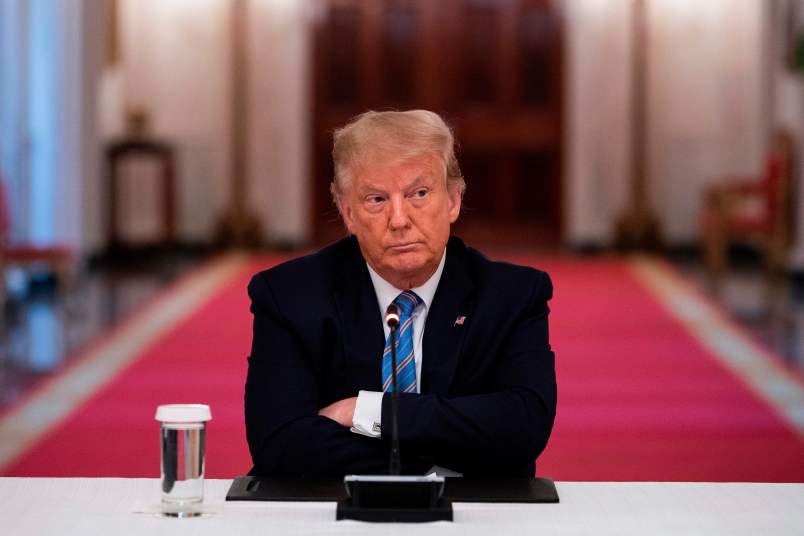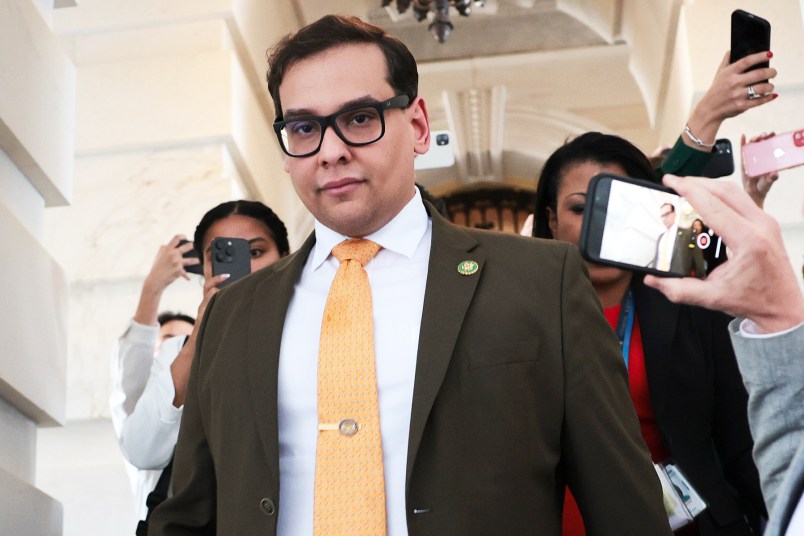With the COVID-19 vaccines starting to bring the pandemic to an end, former President Trump has stepped in to take credit for the feat.
What’s surprising is that he’s been aided in this by the Washington Post and New York Times, both of which have run articles this week arguing that the speed-up in the vaccine rollout under President Biden only builds off of a plan put into place by Trump. In short, they contend that Trump is right: he had a plan to distribute the vaccine that Biden was lucky enough to inherit.
That’s flat wrong. A look at what actually happened in the Trump administration’s last months shows that the White House lacked a plan for the “last mile” of distribution, leaving that to the states while lobbying Congress not to pass much-needed funding that would spur state and local governments to get the vaccine into arms.
On its own terms, the Trump administration did not have a plan to distribute the vaccine to Americans en masse beyond “let the states figure it out.”
What the Trump administration left the country with was a partnership with pharmacies to vaccinate nursing homes — the only real footprint of a federal plan to deliver vaccine into people’s arms. And even that foundered amid allegations of inefficiency compared to states that opted out.
What’s more is that that one plan only covered the first phase of distribution: nursing home residents and hospital workers, who received inoculations from the medical facilities at which they worked. It set the Biden administration up for a “vaccine cliff,” an outcome that was avoided in part due to the outcry over the sheer ineptitude of the effort’s early stages.
No Plan
The question here is simple: what did the administration plan to do to get vaccines into arms? After the vaccines got to the states, what was the plan for the last mile?
The answer is that there was none. The vaccines were dumped onto the states, without any real push to coordinate how they would go from federal custody into the arms of Americans.
That so-called “last mile” is crucial, as the U.S. learned in December and January, when shipments were missed and vaccine sat unused — or ended up in trash bins.
There were two main, limited ways in which the Trump administration used federal power to plan for this so-called “last mile.”
One took place in September, when the CDC asked states to provide plans for how they would prioritize distribution. But what to do for the last mile — actually designing and implementing the distribution — was left to the states.
The one program that the Trump administration oversaw to directly deliver vaccine to Americans was its nursing home partnership with CVS and Walgreens. That program did succeed in vaccinating the country’s nursing home population — an achievement marred by the program’s extreme inefficiency compared to states that rejected it.
Some state governments eventually dropped the program midway through because coordination was so poor.
“There was this philosophical difference in approach that hindered vaccine distribution under the Trump administration,” Josh Michaud, an epidemiologist at Kaiser Family Foundations, told TPM, adding that some of the “seeds” for more effective distribution had been planted under Trump. “It’s been a positive to make a more hybrid approach where you’re not just dumping doses at the feet of the states, and you’re working more in partnership and giving support.”
That didn’t stop senior Trump administration officials from boosting the campaign throughout the year.
Paul Mango, chief of staff to then-HHS Secretary Alex Azar, told reporters in August that the government would have “hundreds of millions of vaccines, doses, available before year end.”
Dr. Matt Hepburn, a Trump administration official detailed to Operation Warp Speed, also told reporters that the military’s involvement in the plan would ensure that they would “plan every detail with every contingency.”
“I hope the American public can be reassured — I don’t see how we can work details more than we have been to address all of those different contingencies,” Hepburn said.
The administration reportedly went even further than washing its hands of the distribution effort.
State health officials had been pushing since May for Congress to appropriate money to fund the distribution effort, saying that funds would be needed to plan for vaccinations on the local level and to hire and train vaccinators.
But top Trump administration officials lobbied Congress to deny state governments extra funding for the vaccine rollout even while officials expressed their dire need for more, according to a January STAT report.
We Watched It Happen
But as we saw over the winter, the state health officials were right: they did need more money and resources.
While the administration was overpromising and underdelivering — HHS Secretary Alex Azar’s October estimation that we’d have 100 million doses by the end of 2020 was soon downgraded to 40 million doses, then to 20 million — the vaccinating process crawled.
Vice President Mike Pence said in December that the country was on track to vaccinate 20 million people by the end of the month. Only about 2.8 million people were ultimately vaccinated by that date.
Without any cohesive plan and administrative push to get states more money, historically underfunded state health departments were caught flat-footed, lacking the resources to set up a robust infrastructure ahead of time.
And any planning they could do was routinely thrown into flux by the administration’s false promises. That dynamic persisted into the very last days of the Trump administration.
The administration also blindsided states by failing to notify them of when precise amounts of vaccine would be delivered. One mid-December scandal saw some states have their vaccine allocations cut by up to 50 percent with only one day’s warning. The Trump administration blamed the states as Pfizer issued a caustic statement complaining that it had “millions more doses sitting in our warehouse but, as of now, we have not received any shipment instructions for additional doses.”
Azar announced in January that the federal government would release doses of the vaccine held back for second shots, giving health officials the impression that their stockpiles would grow and allow them to dramatically expand the vaccination effort.
That promise turned out to be entirely hollow — there was no such reserve, as the administration had already been shipping out all the vaccine available, taking second doses right off the manufacturing line.
One enraged health official, director of Oregon Health Authority Pat Allen, wrote a furious letter demanding an explanation and calling the walkback both “disturbing” and putting his plans to expand eligibility at “grave risk.”
Azar muddied the waters further by saying that vaccine doses would be allocated based on how fast states have been administering them — a statement that appeared flatly wrong when West Virginia, then moving at the fastest clip, received no additional doses.
As a sign of how undependable the administration’s word had become by the end, the CDC did not immediately update its eligibility guidance after Azar urged states to expand their vaccinations to adults 65 and older and people with high-risk underlying conditions, as more supply would soon become available. Some federal officials reportedly even did cleanup, tempering those instructions in conversations with state and local officials.
Credit For What?
But Trump himself made the same mistake that the New York Times and Washington Post did in their stories about the subject.
He issued a statement earlier this week saying that he “hope[s] everyone remembers when they’re getting the COVID-19…vaccine, that if I wasn’t President, you wouldn’t be getting that beautiful ‘shot’ for 5 years, at best, and probably wouldn’t be getting it at all.”
But it’s a statement that, apart from being utterly typical of the former president, conflates vaccine development with vaccine distribution.
Those are two separate elements in the campaign to inoculate the country.
“They were so heavily focused on getting the doses out, but there was a vacuum on the planning side,” Michaud said of the Trump administration’s effort.
While planning for distribution ended with the nursing home federal partnership, the Trump administration did succeed in spurring the development of the three COVID-19 shots being used to vaccinate the country.
Dr. Peter Marks, the FDA’s top vaccine scientist and a Star Trek fan, came up with the name for the program and the approach: the federal government would subsidize COVID-19 vaccine development, allowing companies to scale up manufacturing for shots that may not pan out so that if trials confirmed they worked safely, the country would immediately begin to vaccinate en masse.
That’s the one area where the Trump administration — or rather the career officials therein — deserve credit. The second half — having a plan to vaccinate people en masse — did not exist.
Marks himself threatened to resign in August after Trump pressured the FDA to authorize a vaccine before the November election.
That threat succeeded in keeping the vaccine on the timetable of its clinical trials. But when it came time to distribute it to millions of Americans, there simply was no plan.



